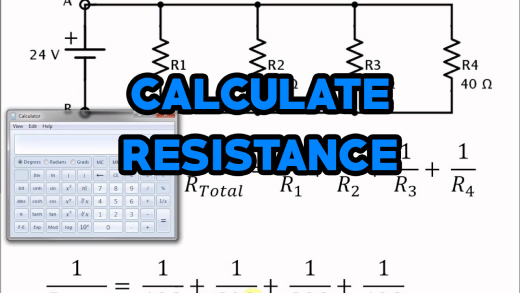How to Calculate Resistance in Series and Parallel
Looking for a formula for calculating series and parallel resistance, as well as a combined series and parallel resistance? Your circuit board needs to be protected if you don't want it to burn! Several simple steps will be shown in this article. The use of "in" and "out" to help novices understand the concepts of wiring is simply a figure of speech to help them understand what follows. Resistors don't really have an "inside" and an "outside."

Calculating Resistance in Series Circuits:
Series circuits are formed by connecting components end to end, creating a single path for current flow. In a series circuit, you can calculate the total resistance (R_total) by adding the resistances of all the components together.
Suppose you have three resistors connected in series, R1, R2, and R3:
R total =R1+R2+R3
There is no limit to how many resistors can be connected in series using this equation. It is important to remember that the total resistance of a series circuit always exceeds the resistance of any individual component. As the total resistance of the circuit increases, more resistors restrict current flow.
Calculating Resistance in Parallel Circuits:
Several paths for current flow are created in a parallel circuit by connecting components across common points. In parallel circuits, you calculate total resistance (R_total) by summing the reciprocals of the resistances of every component.
A parallel connection of resistors R1, R2, and R3 would look like this:

You can calculate the total resistance by multiplying the reciprocal of the total resistance by the following:
![]()
There is no limit to how many resistors can be connected in parallel using this equation. There is always less resistance in a parallel circuit than in an individual circuit. The overall resistance of the circuit decreases as more paths are added for current to flow.
Comparing Series and Parallel Circuits:
To sum up, the total resistance of a circuit is determined by the resistance of all the resistors connected in series. Parallel resistors, on the other hand, have a total resistance lower than their smallest individual resistance. For designing and analyzing electronic circuits in various applications, it is essential to understand how to calculate resistance in series and parallel circuits.
Faqs
Question 1: What is the difference between series and parallel circuits?
Answer: Series circuits are formed when components are connected end-to-end, which means current can flow in only one direction. A parallel circuit creates multiple paths for current to flow by connecting components across common points.
Question 2: In the same circuit, can series and parallel connections be mixed?
Answer: In complex electronic circuits, a combination of parallel and series connections is common. To meet the needs of a wide range of applications, engineers can strategically combine parallel and series configurations to achieve specific voltage, current, and resistance requirements
Final Thoughts
Finally, it is very important to understand how calculating resistance in series and parallel circuits can help design and analyze electronic circuits more effectively. Engineers, technicians, and hobbyists can benefit from mastering these calculations. Once you master them, you will find it easier to predict circuit behavior, optimize performance, and troubleshoot problems. You can create sophisticated electrical systems tailored to meet diverse application requirements when you master the principles of series and parallel circuit configurations.
IRF3205 MOSFETs: Applications, Features, and Equivalent
BSN254A Transistor: Applications, Datasheet, and Equivalent
Relay: What You Need to Know?
MAX232 IC:Features,Applications and Types
Capacitive Voltage Divider : Prinple & Its Applications
What is Parity Generator and Parity Checker?Everything You Need yo Know
What is Bluetooth? Types, Advantages and Applications
Tesla Coil : Overview, Principle & Applications
Nickel-Cadmium Battery : Principle & Its Applications
Understanding Rectifiers: How Do They Convert AC to DC?










